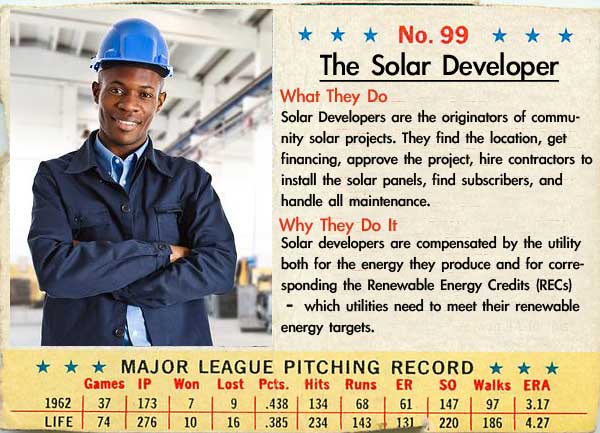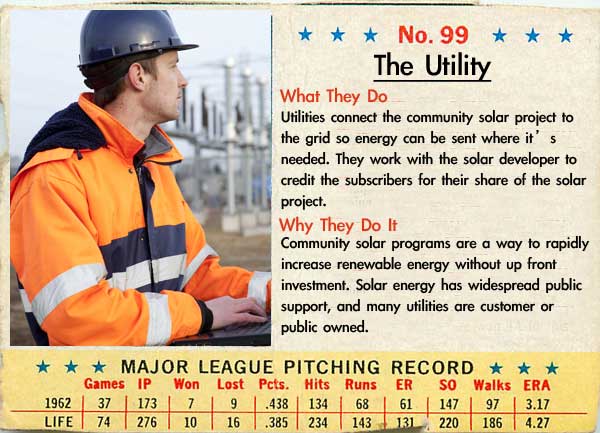What Is A Community Solar Garden?
A community solar garden is when two or more ‘Subscribers‘ share the benefits of a single solar installation. The subscribers can be homeowners, renters, condo owners, businesses, schools, and/or government buildings. The subscribers share of energy generated is usually subtracted from the energy they consume each month in a process called ‘net metering’ which is common in residential solar. The primary purpose of a community solar garden is to offset energy consumption with clean, often less expensive solar energy. Community Solar Gardens can also be used to protect the subscriber from rising energy costs.
Community Solar is like Residential Solar but with Even Better Economics, More Job Creation, and a Bigger Potential Impact. #solarenergy — SolarRenter (@SolarRenter) August 27, 2015
What ARe the Benefits of Community Solar?
The biggest benefit to community solar is that everyone gets to take advantage of solar energy. Previously it was only homeowners with south facing roofs and good credit that were able to take advantage of solar energy, limiting the solar market to 22% of the US population according to one NREL study published in 2010. But today, there are organizations using community solar as energy assistance for low-income families. Just as community gardens make it possible for anyone to grow their own food, community solar gardens make it possible for anyone to generate their own clean energy.
Big companies like WalMart and Ikea use solar power to lock in their energy prices for the next 20 years. Knowing some of their energy costs 20 years ahead helps them make accurate forecasts and is attractive to investors. With community solar, anyone can do a version of this while reducing their carbon footprint.
Why are Community solar Gardens Growing So Fast?
There are three reasons that Community Solar Gardens appear to be at a tipping point:
- The plummeting cost of solar equipment.
- The Overwhelming Public Support for Solar Energy
- Tax Incentives and Renewable Energy Targets
What do Utilities think about Community SOlar?
A recent LBJ study shows that community solar provides value to both the electric utility and the subscribers. Unfortunately, many utilities have fought community solar in the same way they have fought residential solar. Distributed energy generation, such as solar energy challenges the traditional business model of electric utilities, who make money by selling electricity to the same people who are now empowered to generate their own. Utility opposition to community solar programs has lead to big problems for them.
Organizers cited opposition to community solar as motive to thwart the biggest utility acquisition in history! http://t.co/EZS2GSufUt — SolarRenter (@SolarRenter) August 29, 2015
We think community solar has the potential to bring energy into the 21st century.
The Players
WHAT ARE SOME OTHER CONSIDERATIONS TO CONSIDER?
Because there is no standard for the length of subscription, size of panels, and efficiency of panels, Community Solar Gardens can be difficult to compare between developers. That is why SolarRenter.com created a ratio to compare community solar gardens.
WHAT ABOUT LEGAL STRUCTURES AND TAX IMPLICATIONS?
Solar Developers are careful to structure their offerings so the shares of community solar gardens do not constitute securities. Because of this, subscribers usually only own a right to their share of energy produced for the term of the contact. They do not actually own a share of the solar panels themselves. However, Crowdfunding Laws are being enacted in several states that add additional opportunities for subscribers to truly own a share of the community solar farm. There are also LLC models of community solar that have been successful. If you’d like more resources on community solar gardens in your state, fill out the contact form here.
What is a Community Solar Garden? http://t.co/cSQiSVwZAf pic.twitter.com/ND5ih6D0pE — SolarRenter (@SolarRenter) September 2, 2015
Please consider taking this quick survey about community solar and be a part of the clean energy transformation!



